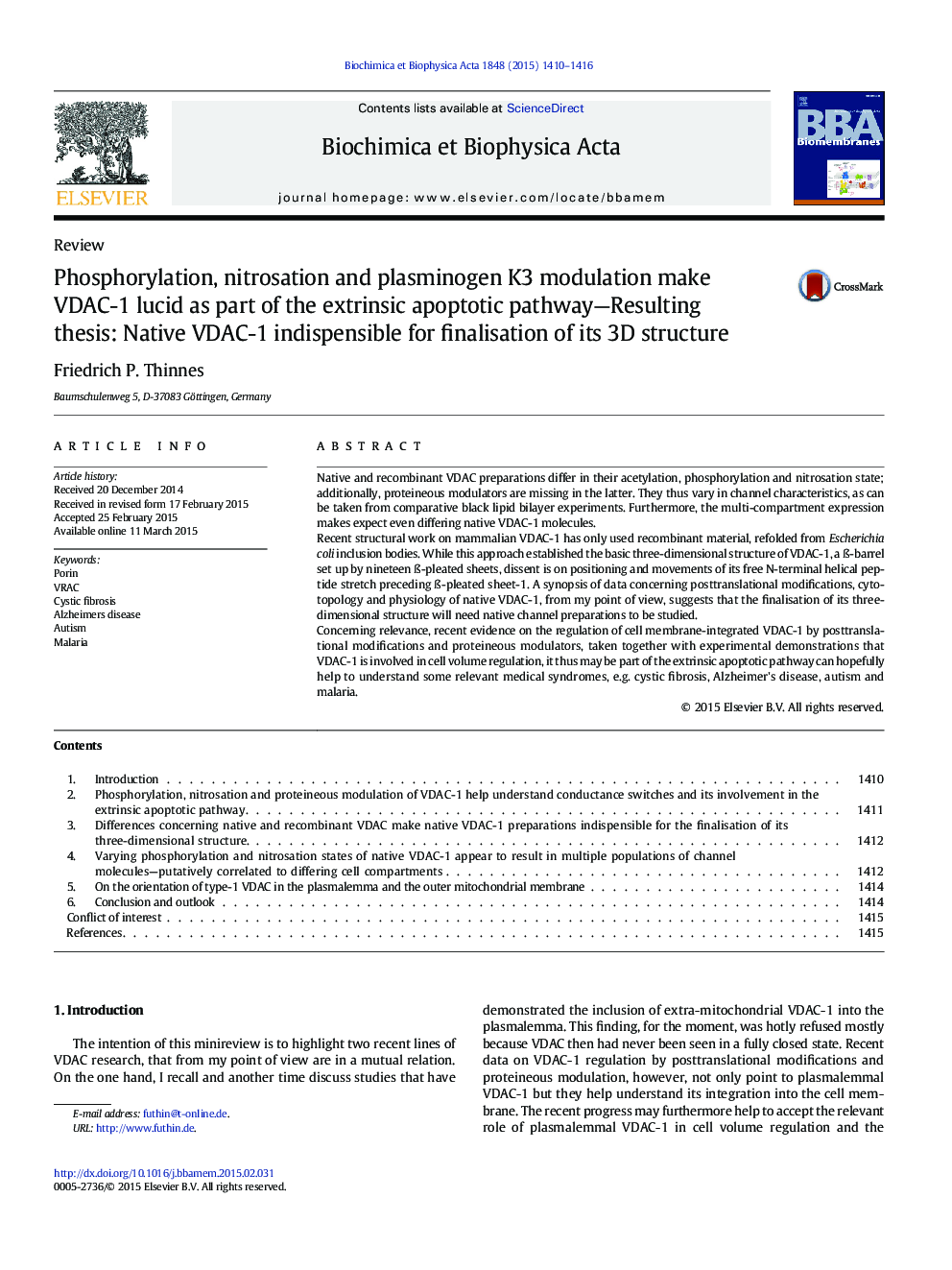| Article ID | Journal | Published Year | Pages | File Type |
|---|---|---|---|---|
| 1944099 | Biochimica et Biophysica Acta (BBA) - Biomembranes | 2015 | 7 Pages |
•Concerning the characterisation of VDAC by artificial lipid bilayer experiments.•Concerning recent work on three-dimensional structure of vertebrate VDAC.•Plasmalemmal VDAC-1 is part of the extrinsic apoptotic pathway.•On a critical difference concerning animal and plant VDAC.•Plasmalemmal VDAC-1 is relevant to understand medical syndromes.
Native and recombinant VDAC preparations differ in their acetylation, phosphorylation and nitrosation state; additionally, proteineous modulators are missing in the latter. They thus vary in channel characteristics, as can be taken from comparative black lipid bilayer experiments. Furthermore, the multi-compartment expression makes expect even differing native VDAC-1 molecules.Recent structural work on mammalian VDAC-1 has only used recombinant material, refolded from Escherichia coli inclusion bodies. While this approach established the basic three-dimensional structure of VDAC-1, a ß-barrel set up by nineteen ß-pleated sheets, dissent is on positioning and movements of its free N-terminal helical peptide stretch preceding ß-pleated sheet-1. A synopsis of data concerning posttranslational modifications, cyto-topology and physiology of native VDAC-1, from my point of view, suggests that the finalisation of its three-dimensional structure will need native channel preparations to be studied.Concerning relevance, recent evidence on the regulation of cell membrane-integrated VDAC-1 by posttranslational modifications and proteineous modulators, taken together with experimental demonstrations that VDAC-1 is involved in cell volume regulation, it thus may be part of the extrinsic apoptotic pathway can hopefully help to understand some relevant medical syndromes, e.g. cystic fibrosis, Alzheimer's disease, autism and malaria.
Graphical abstractFigure optionsDownload full-size imageDownload high-quality image (120 K)Download as PowerPoint slide
